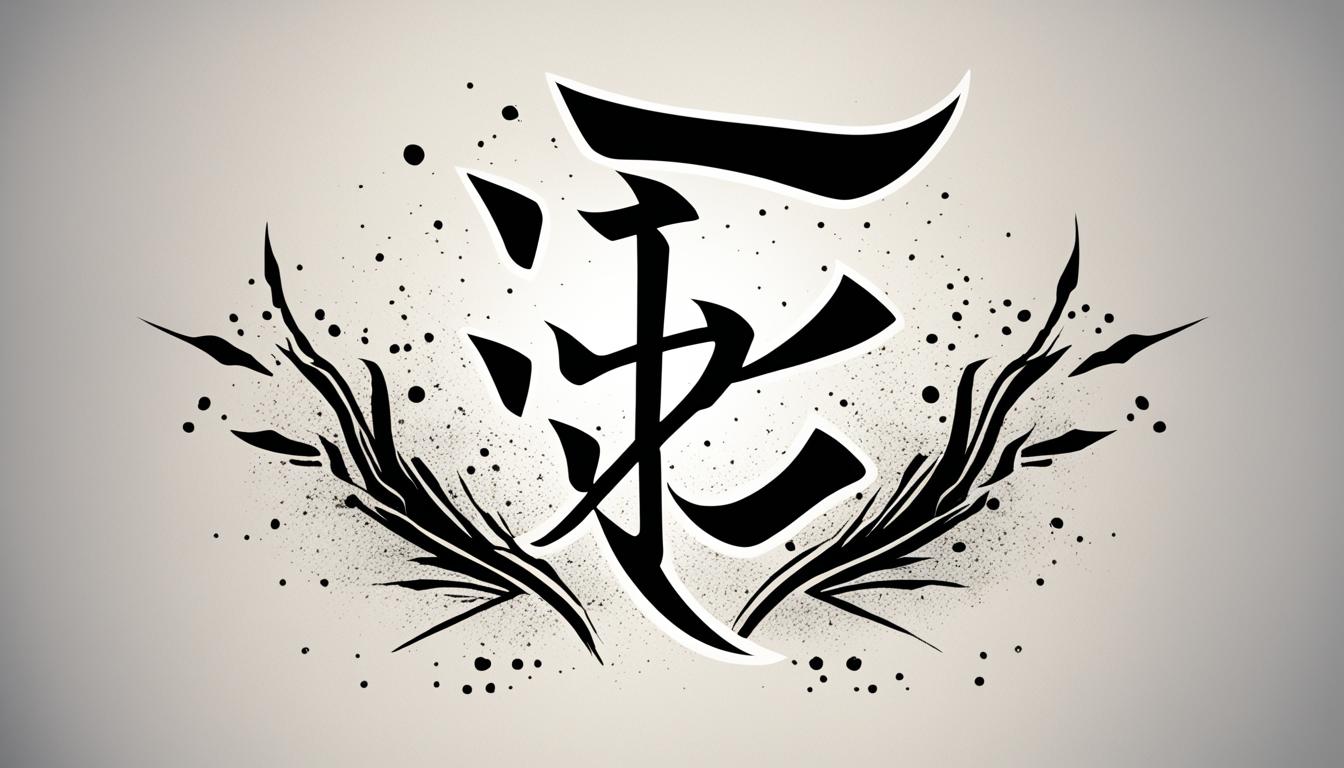
In order to effectively communicate in Japanese, it is important to learn the kanji for essential words. This quick guide will provide you with the necessary information to learn the Japanese kanji for the word “what” and enhance your language skills. You will learn how to write “what” in Japanese characters, understand its pronunciation, and translate it to Japanese kanji symbols.
When it comes to expressing the meaning of “what” in Japanese, the word that is commonly used is “nani” (何). In terms of grammar, “nani” can function as both a noun and an interrogative pronoun. It is often used to ask questions or to express a sense of confusion or curiosity.
To pronounce “nani” in Japanese, it is pronounced as [na-nee]. The equivalent word for “what” in Japanese kanji is 何. The kanji for “nani” consists of the radical 亻人 (ninben) meaning “person” and the radical ? (reachiben) representing the sound of a question. This kanji symbolizes the idea of a person asking a question.
The word “what” (nani) can be used in various contexts in Japanese. It is commonly used to ask questions about an unknown or unspecified thing, to express surprise or disbelief, or when seeking information. Understanding the cultural usage of the word can help you communicate effectively in Japanese conversations.
Here are a few examples of how “what” (nani) is used in sentences:
- “何をしていますか?” (Nani o shite imasu ka?) – “What are you doing?”
- “何が起こったの?” (Nani ga okotta no?) – “What happened?”
- “それは何ですか?” (Sore wa nandesu ka?) – “What is that?”
Learning the Japanese kanji for “what” will expand your language skills and allow you to communicate more effectively in Japanese. Practice using it in conversational contexts to improve your fluency and understanding of the language.
The Importance of Learning Kanji
Kanji is an integral part of the Japanese writing system. It consists of written characters adopted from the Chinese writing system and is used alongside hiragana and katakana to write Japanese words. Learning kanji plays a crucial role in mastering the Japanese language and offers numerous benefits.
One of the primary reasons why learning kanji is important is that it provides visual cues that aid in comprehension. Japanese is a language with many homophones, words that have the same pronunciation but different meanings. Kanji helps to distinguish between these homophones by providing context and visual representation. By understanding the kanji, you can grasp the intended meaning of words, even if they are pronounced the same.
Furthermore, kanji is widely used in various texts, including newspapers, books, and signs. It is estimated that around 2,000 kanji characters are commonly used in Japan. By mastering kanji, you will be able to read and understand a significant portion of written Japanese. This will not only enhance your language skills but also open up opportunities to engage with Japanese culture and society on a deeper level.
| Benefits of Learning Kanji | |
|---|---|
| Improved Reading Skills | Mastering kanji allows you to read a wide range of texts, including books, articles, and websites. |
| Expanded Vocabulary | Learning kanji exposes you to a vast number of words and phrases, expanding your vocabulary significantly. |
| Understanding Complex Texts | Many technical and academic texts heavily rely on kanji. Familiarity with kanji enables you to comprehend intricate subjects. |
| Cultural Appreciation | Kanji is deeply intertwined with Japanese culture and history. Learning kanji allows you to appreciate and understand cultural elements more deeply. |
Strategies for Learning Kanji

Learning kanji requires patience and dedication. Here are some effective strategies to help you learn kanji efficiently:
1. Start with Basic Kanji
Begin your kanji learning journey by focusing on the most commonly used and essential kanji characters. These foundational kanji will form the basis for building your kanji knowledge and understanding.
2. Break Down Complex Characters
When encountering complex kanji characters, break them down into their individual components. Understanding the meaning and stroke order of each component will make it easier to memorize and recognize the kanji as a whole.
3. Practice Writing Kanji
Writing kanji characters helps reinforce your memory and understanding. Practice writing kanji regularly using the correct stroke order. This will improve your ability to recognize and reproduce kanji accurately.
4. Learn Kanji with Context
Learning kanji within the context of words and sentences is more effective than isolated memorization. Use resources like kanji textbooks, flashcards, and online courses that provide examples of kanji usage in different contexts.
5. Utilize Mnemonic Techniques
Create mnemonic devices or stories to associate kanji characters with their meanings or readings. This can make memorization easier and more enjoyable.
6. Practice Kanji Reading and Vocabulary
Regularly practice reading kanji in different contexts, such as newspapers, books, and websites. Building your vocabulary with kanji will enhance your reading skills and help you understand more complex texts.
7. Use Kanji Practice Resources
Take advantage of various kanji practice resources, including mobile apps, online quizzes, and workbooks. These resources often provide interactive exercises and quizzes to reinforce your kanji knowledge.
By incorporating these strategies into your kanji learning routine, you can effectively improve your kanji skills and develop a solid foundation for mastering the Japanese writing system.
Understanding Kanji Readings
Kanji characters play a significant role in the Japanese writing system. One aspect that makes kanji unique is their multiple readings, known as onyomi and kunyomi. Let’s explore these readings and understand how they are used.
Onyomi and Kunyomi Readings
Onyomi readings are derived from the original Chinese readings of kanji characters. These readings were introduced to Japan during ancient times. On the other hand, kunyomi readings are the Japanese readings of kanji characters. These readings have evolved within the Japanese language.
For example, let’s consider the kanji character “日,” which means “sun.” In onyomi readings, it is pronounced as “ニチ” or “ジツ.” In kunyomi readings, it is pronounced as “ひ” or “か.” The various readings provide flexibility and depth to the language.
Compound Words
When kanji characters are used in compound words, they are typically read with onyomi readings. This is because the compound words often have a Chinese origin. Onyomi readings help convey the meaning and pronunciation of the compound word more accurately.
For example, let’s consider the compound word “学校,” which means “school.” The kanji character “学” has an onyomi reading of “ガク” and the character “校” also has an onyomi reading of “コウ.” So, the compound word is pronounced as “ガッコウ.”
Standalone Kanji and Okurigana
When kanji characters are used on their own or with hiragana, they are typically read with kunyomi readings. This is because standalone kanji represent native Japanese words, and kunyomi readings reflect the original Japanese pronunciation.
Okurigana is the hiragana characters that follow kanji to indicate the grammatical function and conjugation of the word. This combination of kanji and okurigana helps clarify the meaning and pronunciation of the word.
Kanji Pronunciation Variations
It’s important to note that kanji readings can vary depending on context, grammar, and regional dialects. Sometimes, kanji characters may have irregular readings or exceptions to the general rules of onyomi and kunyomi. This adds complexity to the language but also provides opportunities for nuance and expression.
Understanding kanji readings is a crucial step towards deciphering the meaning and pronunciation of Japanese words. It allows you to navigate through texts, communicate effectively, and deepen your understanding of the language.
Benefits of Learning Kanji
Learning kanji provides numerous advantages that can greatly enhance your Japanese language skills. Whether you are a beginner or an advanced learner, familiarizing yourself with kanji can significantly improve your reading efficiency, expand your vocabulary, help you understand complex texts, and deepen your cultural appreciation.
One of the key benefits of learning kanji is improved reading efficiency. Kanji characters convey meaning through their visual representations, allowing you to quickly grasp the essence of a word or phrase. By recognizing kanji, you can read and comprehend Japanese texts more efficiently, saving you time and effort in the process.
Furthermore, kanji opens the door to an expanded vocabulary. Many words in Japanese are written in kanji, and by learning these characters, you gain access to a wider range of words and expressions. This not only enhances your linguistic ability but also enables you to express yourself more precisely and eloquently in Japanese.
In addition, learning kanji enables you to understand complex texts. Japanese literature, business documents, and academic materials often contain intricate kanji combinations that convey nuanced meanings. By mastering kanji, you can navigate through these complex texts with greater ease and comprehend the subtle nuances embedded within them.
Moreover, kanji learning promotes cultural appreciation. Kanji characters play a vital role in preserving Japanese traditions, values, and historical heritage. By understanding the meaning behind certain kanji, you can gain insights into Japanese culture, its historical significance, and the intricate connections between words and concepts.
Whether you are learning Japanese for travel, work, or personal enrichment, the benefits of learning kanji cannot be overstated. From improved reading efficiency to expanded vocabulary, from understanding complex texts to deepening cultural appreciation, kanji holds the key to unlocking a richer and more meaningful experience in the Japanese language.
